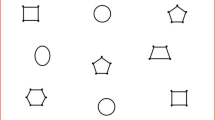Abstract
The effects of training on a person's ability to perceive, interpret and utilize information presented via the tactile sense were examined by using a dual-channel electrocutaneous tracking approach. The electrocutaneous code studied was linear pulse rate encoding of information. The stimulus had a pulse width of 200 μs and a pulse rate between 2 and 50 pulsed per second. Three tracking tasks-visual tracking, onedimensional electrocutaneous tracking and two-dimensional electrocutaneous tracking-were performed by 20 subjects during eight to nine daily training sessions. The effects of this training regimen were found to be highly significant for both electrocutaneous tracking tasks (p<0.00005). The overall average improvement between successive training sessions was 21.6% for one-dimensional electrocutaneous tracking and 22.9% for two-dimensional electrocutaneous tracking. Furthermore, the rate of improvement was fastest during the initial training sessions with a slower rate of improvement seen in most subjects beginning with their fifth session. The cumulative effects of training were also reflected in the lesser amounts of practice and review required by the subjects with each succeeding test session. Results from this study can be used to estimate the amount and rate of improvement that one can expect using a typical training program for tactile sensory aids.
Similar content being viewed by others
References
Bach-y-Rita, P. Sensory substitution in rehabilitation. In:Rehabilitation of the Neurological Patient, edited by L. Illis, M. Sedgwick, and H. Granville. Oxford: Blackwell, 1982, pp. 361–383.
Clippinger, F. W., R. Avery and B. R. Titus. A sensory feedback system for an upper-limb amputation prosthesis.Bull. Prosth. Res. BPR-10(22):247–258, 1974.
Collins, C.C. Tactile television: Mechanical and electrical image projection.IEEE Trans. Biomed. Eng. BME-11(1):85–91, 1970.
Collins, C.C. and J. Madey. Tactile sensory replacement.Proc. San Diego Biomed. Symp. 13:15–26, 1974.
Dixon, W.J. and F.J. Massey, Jr.Introduction to Statistical Analysis-Fourth Edition. New York: McGraw-Hill, 1983.
Kato, I., S. Yamakawa, K. Ichikawa and M. Sano. Multifunctional myoelectric hand prosthesis with pressure sensory feedback system.Proc. 3rd Int'l. Symp. Ext.Control, Dubrovnik, Yugoslavia, Aug. 1970.
Keppel, G.Sesign and analysis—A Researcher's Handbook. Englewood Cliffs, New Jersey: Prentice Hall, 1982.
Melen, R.D. and J.D. Meindl. Electrocutaneous stimulation in a reading aid for the blind.IEEE Trans. Biomed. Eng. BME-18(1):1–3, 1971.
Prior, R.E., P.A. Case and J. Lyman. Hook opening feedback for the below elbow amputee.Proc. San Diego Biomed. Symp. 16:357–368, 1977.
Saunders, F.A. An electrotactile sound detector for the deaf.IEEE Trans. Audio Electroacoust. AU-21(3):285–287, 1973.
Scott, R.N., R.H. Brittain, R.R. Caldwell, A.B. Cameron and V.A. Dunfield. Sensory feedback system compatible with myoelectric control.Med. Biol. Eng. Comput. 18:65–69, 1980.
Shannon, G.F. A myoelectrically-controlled prosthesis with sensory feedback.Med. Biol. Eng. Comput. 17:73–80, 1979.
Solomonow, M., J.S. Herskovitz, and J. Lyman. Learning in the tactile sense.Ann. Biomed. Eng. 7:127–134, 1979.
Szeto, A.Y.J. Electrocutaneous code pairs for artificial sensory communication systems.Ann. Biomed. Eng. 10:175–192, 1982.
Szeto, A.Y.J. and J. Lyman. Comparison of codes for sensory feedback using electrocutaneous tracking.Ann. Biomed. Eng. 5:367–383, 1977.
Szeto, A.Y.J., J. Lyman and R.E. Prior. Electrocutaneous pulse rate and pulse width psychometric functions for sensory communications.Human Factors 21(2):241–249, 1979.
Szeto, A.Y.J., R.E. Prior and J. Lyman. Electrocutaneous tracking: A methodology for evaluating sensory feedback codes.IEEE Trans. Biomed. Eng. BME-26(1):47–49, 1979.
Szeto, A.Y.J. and F.A. Saunders. Electrocutaneous stimulation for sensory communications in rehabilitation engineering.IEEE Trans Biomed. Eng. BME-29(4):300–308, 1982.
Author information
Authors and Affiliations
Rights and permissions
About this article
Cite this article
Szeto, A.Y.J., Chung, YM. Effects of training on human tracking of electrocutaneous signals. Ann Biomed Eng 14, 369–381 (1986). https://doi.org/10.1007/BF02367409
Issue Date:
DOI: https://doi.org/10.1007/BF02367409




